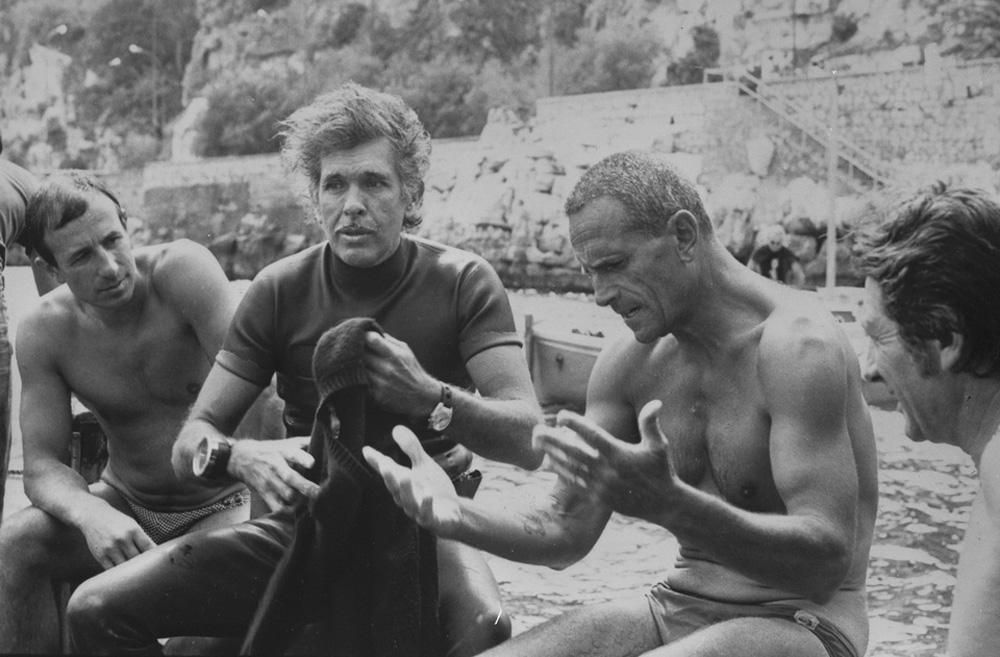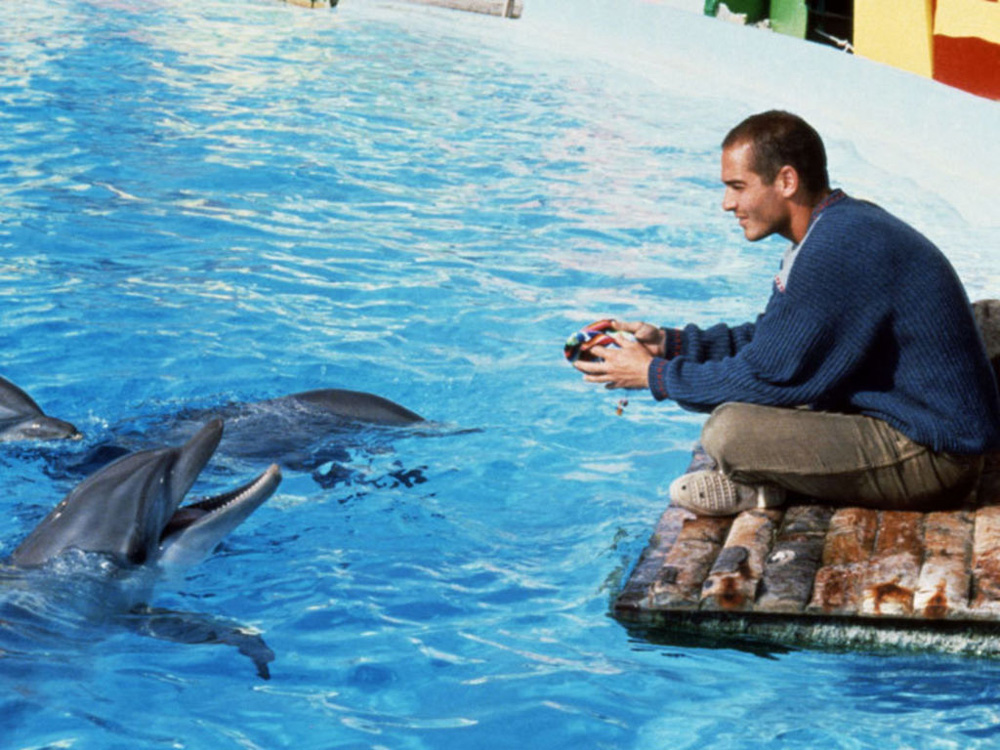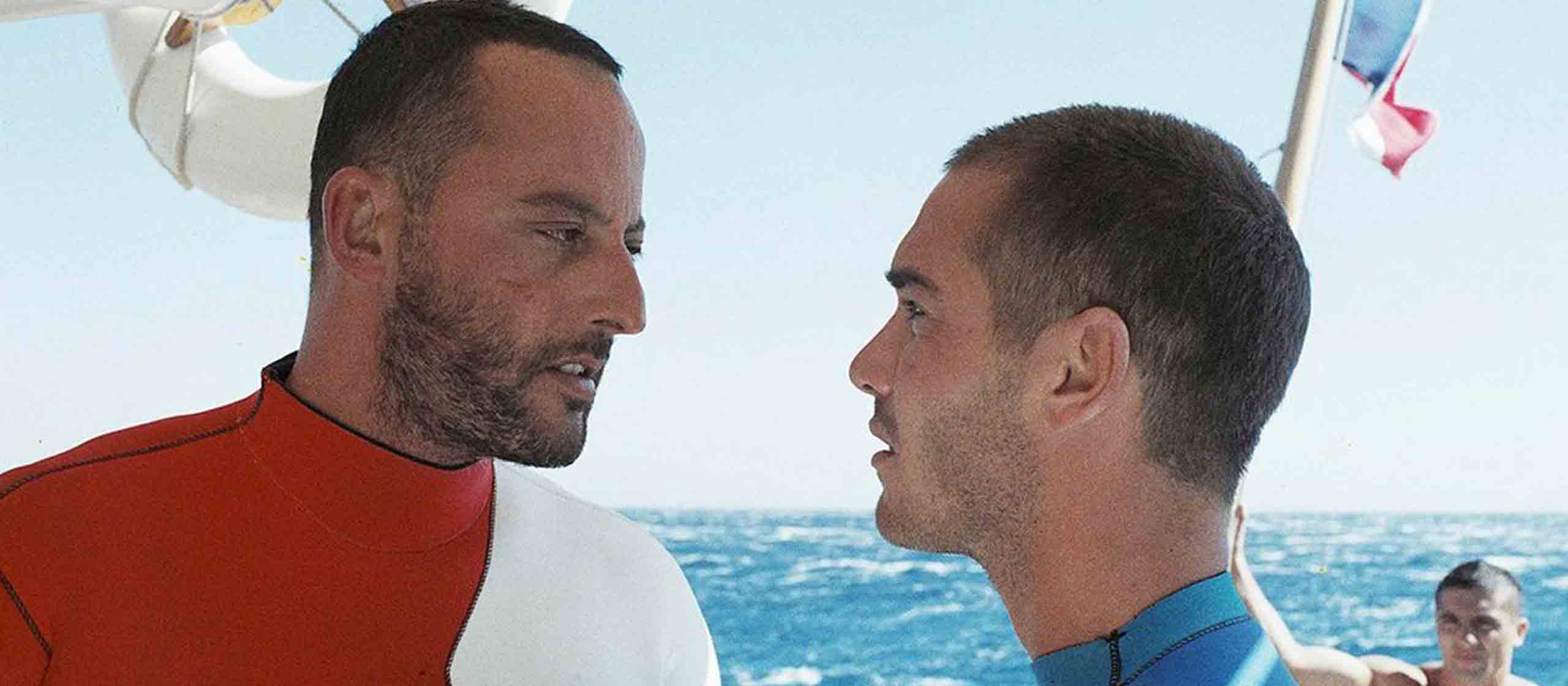POP diving
POP Diving: The Big Blue
BACKGROUND INFO and FACTS
In the 60’s and 70’s, freediving world champions Jaques Mayol and Enzo Maiorca face one another in the blue, beating each other’s records. Their performances leave medical experts of those times speechless, and bring freediving to the attention of the general public. It is Mayol, the Frenchman, who finally prevails on the Italian, becoming the first freediver to go beyond 100 meters of depth. And it is precisely around Mayol, considered the father of modern day freediving, that in 1987, movie director Luc Besson creates his first cult-movie, Le Grand Bleu.

THE FILM
The Blue is so vast and dream-like that it could envelop the collective unconscious of any living being, from man to bacteria. A strong surreal sense permeates the movie, from Mayol’s (Jean-Marc Barr) dream to Enzo’s mask (Maiorca is played by an outstanding Jean Reno), to the drinking scene in evening attire on the bottom of the pool. In full Besson-style, almost all the characters are caricatural, including Rosanna Arquette, who at times moves like a puppet, as well as the Italians, and the competition judges. At sea, though, things get serious, bodies hyperventilate, go down, come up, dance. They dance with dolphins. It is especially an ethereal Barr-Jaques Mayol who dances; in the movie, as in real life, he was the first to sense the physiological similarities between man and dolphin. Mayol lay the foundations for scientific exploration of the blood-shift phenomenon, and for modern day freediving.

The plot follows dates, figures, characters, and events enjoying artistic license: neither reached 122 meters in real life. Jaques Mayol and Enzo Maiorca in fact broke each other’s records over a much longer time period, and hardly ever during the same competition.
But Le Grand Bleu is a movie that, besides the plot, does not exceed in using artistic license, on the contrary: events, scenes, and configurations are skillfully in line with the technical and physiological reality of the times. The support divers at various depths show proper gear configuration, and there’s mention of the 60 meter limit for using air as bottom gas. Support divers beyond that depth must use trimix. Descent cable, sled, and lift bag are real or extremely similar to the equipment used in the 80’s.
LEGACY
The people that make up the audience of Le Grand Bleu are either divers, or soon-to- be divers. Besson scatters here and there gems for aficionados, and bait for novices, in a movie that shows the diving world at 360 degrees. One of the very first scenes is a rescue in the bowels of a wreck. Truly unforgettable is also the dive under ice in Peru, and what about the scene on board of a diving bell with the characters sounding like Donald Duck because of breathing helium? And the night-time swims in a bay with dolphins? All scenes capable of capturing the non-followers like a net, and of sending over the moon, multiple times, those who are already divers. Love it or hate it, it is definitely a cult movie for anyone who perceives the blue of the ocean as a mirror of our sweeping inner space, stage of ancient relationships between man and its creatures.

FAMOUS QUOTES
“Roberto: mio palmo!” (Roberto: my fins!) The first sentence uttered by Jean Reno, in “pseudo-Italian” in the original version. It is so wrong that it has become a meme.
“This is my family” – says Jaques showing Rosanna Arquette a picture of dolphins in his wallet.
FUN FACTS
- In the first place, Christophe Lambert was chosen for the role of Mayol, but after the first dives an ear infection forced Lambert to give up the role.
- Luc Besson is a diver, son of two dive instructors from Club Med. He said that he stopped diving activities when he was 17 years old, because of a nonspecified incident.
- The movie was shot in dream locations: Ios and Amorgos (Cyclades Islands), Taormina (Sicily), La Raya (Peru), Cannes and Antibes (French Riviera) and St. John (Virgin Islands).
- The wreck in the rescue scene is the Olympia, still stranded in Liveros Bay, on Amorgos Island.
- Besson presented his project to Jacques Mayol in Marseilles in 1983, and the latter took part in the screenplay.
Before leaving for your next dive adventure, make sure your DAN membership is still active. If it isn’t, join DAN or renew your membership at www.daneurope.org

